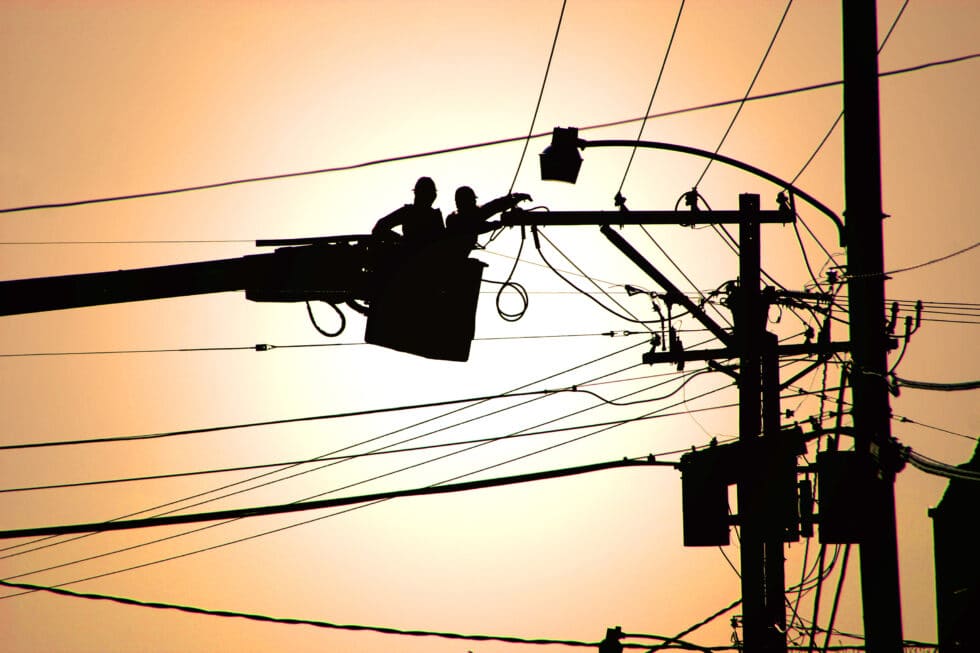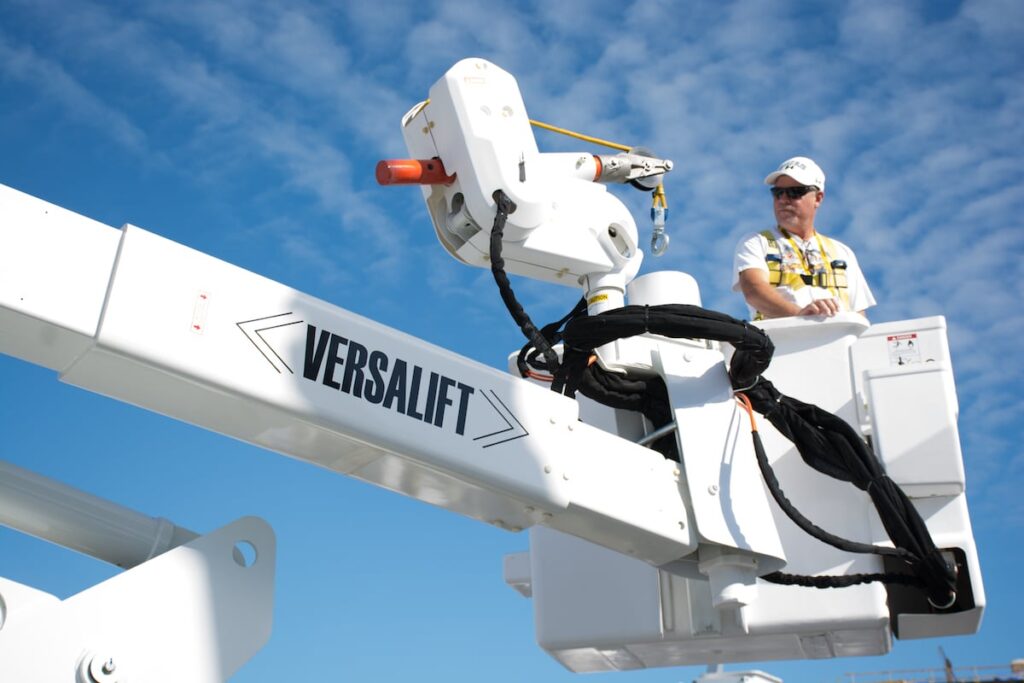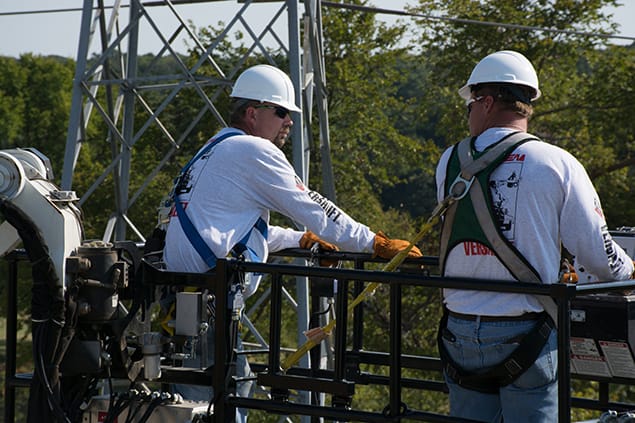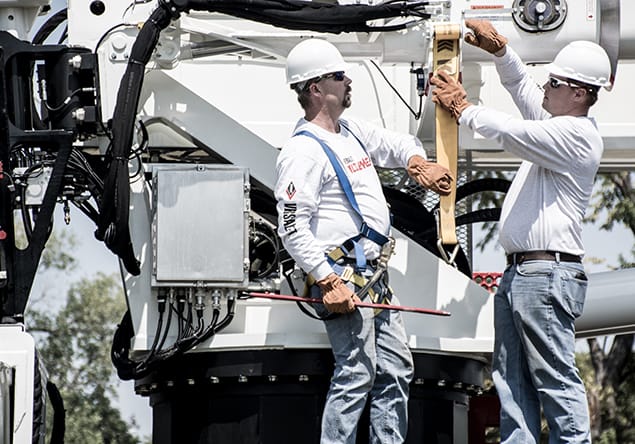The most common accidents when operating aerial lifts are:
However, accidents from aerial lifts can also have a lethal outcome. According to an elCOSH study, an average of 26 construction workers die each year in the US from using aerial lifts. In the study, boom lifts accounted for nearly 70 % of aerial deaths, and scissor lifts accounted for approximately 25 % of the deaths. Of course, not all aerial mistakes lead to deaths, but to minimize the unlikely and tragic event, it is necessary to know the mistakes that potentially can have a lethal outcome – and how to avoid them.
First of all, operating an aerial lift requires more than just basic knowledge — it demands specialized training to understand the equipment’s capabilities, limitations, and safety features. Per ANSI A92.2, all operators are required to go through an operator training course on each individual unit they will be operating. A certificate of completion will be awarded to all that pass the course.
However, that does not authorize the operators to operate the unit.
In order to actually operate the unit, each operator must demonstrate to a qualified inspector that he/she can operate the unit safely and take it through its full range of motion. An “Authorization to Operate” document is required before an operator can use the aerial unit. This document must be signed by the Qualified Inspector.

Unfortunately, many organizations overlook this step, allowing untrained personnel to operate lifts.
Untrained operators may misuse controls, fail to recognize hazards, or handle emergencies improperly, possibly leading to accidents, injury, and equipment damage. Lack of training also reduces efficiency, as operators spend more time troubleshooting or correcting errors.
Each aerial lift has a defined weight limit designed to ensure safe operation. Unfortunately, operators often underestimate the combined weight of tools, materials, and personnel, which can lead to the unit tipping over.
Overloading can cause equipment instability, structural damage, and tipping, putting everyone on-site at risk. It also accelerates wear and tear, shortening the equipment’s lifespan.

Aerial lifts require stable and even ground to maintain balance during operation. Operators who skip site assessments risk working on uneven terrain, loose gravel, or slopes, all of which can compromise safety.
Unstable ground increases the likelihood of tipping, slipping, or the lift becoming stuck. These hazards not only delay the project but also put operators at risk of serious injury.
Aerial lifts are complex machines with numerous components that must function correctly. Skipping pre-operation inspections can lead to overlooked issues, such as hydraulic leaks, worn-out parts, or malfunctioning controls.
Uninspected equipment is more likely to fail during operation, leading to accidents, project delays, and costly repairs. Neglecting inspections also increases liability in the event of an accident.

Weather is a critical factor in aerial lift operations. High winds, heavy rain, and low visibility can compromise stability and reduce operator awareness, yet many projects proceed without considering these risks.
Unsafe weather increases the risk of equipment tipping, operator injury, and accidents caused by impaired visibility. Wind, in particular, can destabilize elevated platforms, making it hazardous to work at height. Never operate a unit then there are wind gusts of over 25 mph.
Personal protective equipment (PPE) is a vital line of defense for aerial lift operators, yet improper use or neglect is a common mistake. Harnesses left unfastened or helmets not worn correctly can turn minor mishaps into major injuries.

Neglecting PPE increases the severity of accidents, particularly falls or head injuries. Misused equipment may also fail during an emergency, leaving operators vulnerable. If there is a reportable accident, OSHA can fine the utility for not taking appropriate measures to ensure the operator was using the proper PPE.
Effective communication is essential for safe aerial lift operation, especially on busy job sites with multiple teams. Misunderstandings between operators and ground staff can lead to collisions, inefficiencies, or even injuries.
A lack of communication increases the likelihood of accidents, delays workflows, and creates confusion about responsibilities.
Avoiding these common aerial lift mistakes is essential for safe, efficient operations. From proper training and routine inspections to understanding site conditions and weather, proactive measures save time, reduce risks, and protect your team.
Read more about aerial lift safety here: Safety Guidelines for Aerial Lift Use: Protecting Your Crew.
Partner with Versalift for reliable aerial lifts and expert safety resources. Our equipment is designed to meet the highest safety standards, ensuring your team works securely and efficiently at height. Contact us today to learn more about our solutions.
Explore related posts to learn more about Versalift’s products, customer stories, industry updates, and how we support essential infrastructure through innovation and service.
Advanced safety features like TruGuard™ and SlopeMax.
Our QA247 is the foundation of every product we assemble.
Heavyweight Performance – Best in class payloads and lighter chassis options.
We design our products with easy maintenance in mind.

Have questions about our bucket trucks or need help finding the right solution? Fill out the form below, and a member of our team will get back to you shortly.